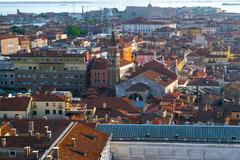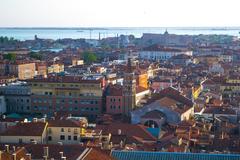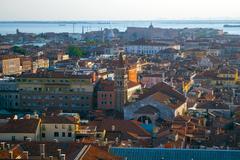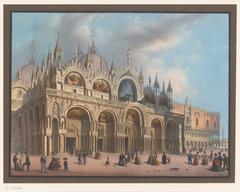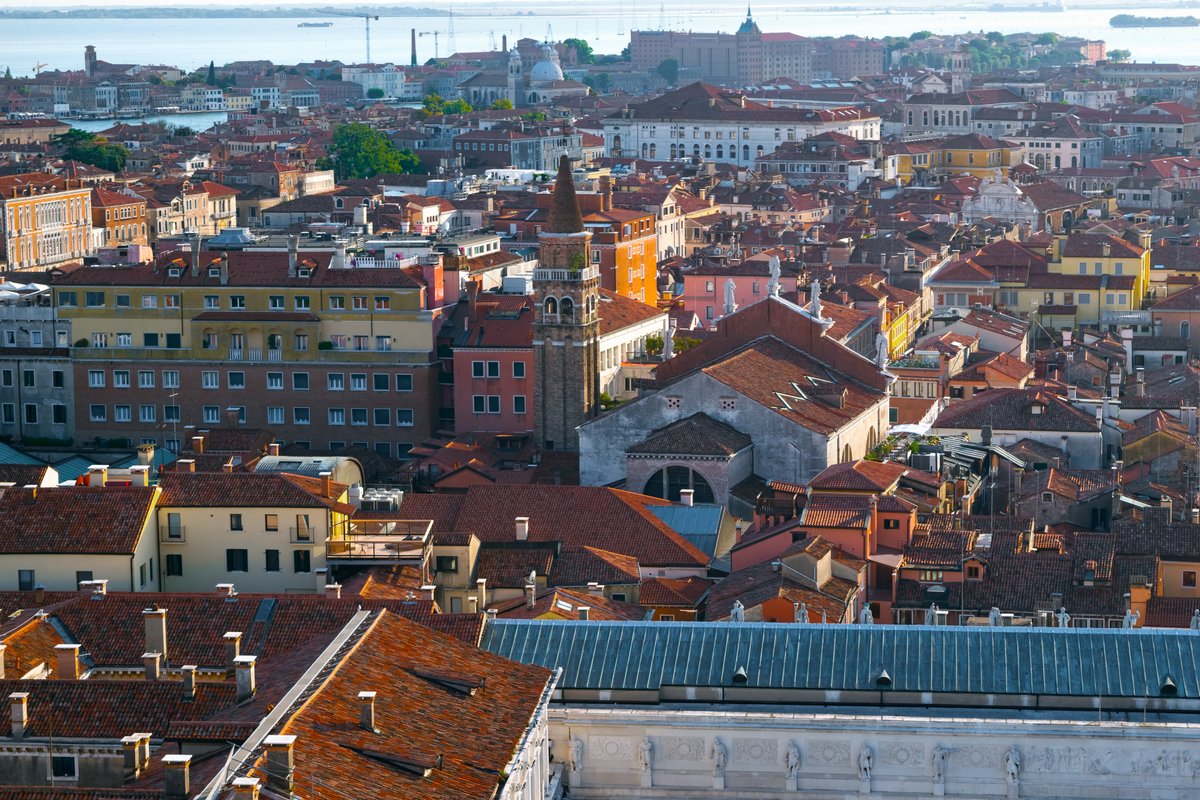
San Marco Venice: Visiting Hours, Tickets, and Historical Sites Guide
Date: 14/06/2025
Introduction
San Marco, Venice’s oldest and most iconic district, stands as the cultural, political, and spiritual core of the city. Its roots trace back to the 9th century, when Venetian merchants brought the revered relics of Saint Mark the Evangelist from Alexandria, catalyzing the district’s rise as the heart of Venice. Today, San Marco is home to architectural masterpieces like the Basilica di San Marco, the Doge’s Palace, and the Campanile di San Marco, all centered around the famed Piazza San Marco—often referred to as “the drawing room of Europe.”
This guide is designed to provide comprehensive information on San Marco’s history, cultural significance, visiting hours, ticketing, accessibility, practical tips, and suggestions for an optimal experience. Whether you are seeking to explore remarkable mosaics, immerse yourself in local festivals, or savor coffee at historic cafés, this resource will help you navigate San Marco efficiently and respectfully. For real-time updates, consult official sites and digital tools such as the Audiala app (audiala.com; veniceinsiderguide.com; basilicasanmarco.it).
Contents
- Origins and Early Development
- Political and Religious Significance
- Architectural Evolution
- Artistic and Cultural Heritage
- Essential Visitor Information
- Visiting Hours & Tickets
- How to Buy Tickets
- Best Times to Visit
- Accessibility
- Nearby Attractions
- Frequently Asked Questions (FAQ)
- Modern-Day San Marco: Challenges and Preservation
- Visitor Experience: Tips and Recommendations
- Enduring Legacy & Conclusion
- Sources
Origins and Early Development
San Marco’s history began in the 9th century with the arrival of Saint Mark’s relics, brought from Alexandria in 828 AD. This event elevated Venice’s religious and political status and led to the construction of the original Basilica di San Marco, intended to house the saint’s remains (audiala.com). Over time, the basilica expanded into a grand cathedral, reflecting the city’s increasing wealth and ambition. San Marco’s location by the Grand Canal positioned it as the nucleus for government, commerce, and religious life (routinelynomadic.com).
Political and Religious Significance
The Doge’s Palace (Palazzo Ducale), adjacent to the basilica, was the seat of Venetian government and the Doge’s residence. Its Gothic architecture and lavish interiors symbolize the power and independence of the Venetian Republic (thetouristchecklist.com). The basilica, with its unique blend of Byzantine, Romanesque, and Gothic elements, asserts Venice’s autonomy from both the Papacy and the Byzantine Empire (veronikasadventure.com; venise.style).
Architectural Evolution
Piazza San Marco, established by the 12th century, is flanked by the Procuratie Vecchie and Nuove—once the homes of Venice’s magistrates. The Campanile di San Marco, originally built in the 12th century and rebuilt after its collapse in 1902, remains a city icon, offering panoramic views of Venice and the lagoon (thetouristchecklist.com). The square and its surroundings showcase a harmonious mix of Byzantine, Gothic, and Renaissance styles, reflecting Venice’s position as a crossroads between East and West (Wikipedia).
Artistic and Cultural Heritage
San Marco’s basilica is renowned for its golden mosaics, marble columns, and the illustrious Pala d’Oro altarpiece (venise.style). The Doge’s Palace houses works by Titian, Tintoretto, and Veronese, while the nearby Teatro La Fenice underscores the district’s vibrant cultural scene. Piazza San Marco remains a hub for festivals, concerts, and public celebrations, including the famous Carnival and the Feast of St. Mark (veniceinsiderguide.com; Italyscapes).
Essential Visitor Information
Visiting Hours & Tickets
- Basilica di San Marco: 9:30 AM–5:00 PM daily. Free entry; tickets required for the museum, Pala d’Oro, and Treasury (basilicasanmarco.it).
- Doge’s Palace: 8:30 AM–7:00 PM (last entry 6:00 PM). Tickets: ~€25 for adults, with discounts for students/seniors.
- Campanile di San Marco: 9:30 AM–7:00 PM. Tickets: ~€10; elevator access available.
- Museo Correr: 10:00 AM–7:00 PM. Entry: ~€10, included in the Venice Museum Pass.
How to Buy Tickets
Tickets are available online via official websites or at ticket offices near Piazza San Marco. Advance booking is recommended, especially during peak travel periods.
Best Times to Visit
Visit early morning or late afternoon for a quieter experience. Avoid major holidays and events, such as Carnival, to escape crowds. Off-season months (November–March) also see fewer visitors (Venice Insider Guide; Afar).
Accessibility
San Marco offers partial accessibility. The basilica and Doge’s Palace provide ramps and elevators, but some historic areas remain challenging for those with limited mobility. Plan ahead and consult official sites for up-to-date accessibility details.
Nearby Attractions
- Teatro La Fenice: Renowned opera house, open for tours and performances.
- Scala Contarini del Bovolo: A lesser-known spiral staircase with unique city views.
- Historic Cafés: Caffè Florian and Gran Caffè Quadri—legendary venues for coffee and people-watching.
- Shopping: Artisanal shops selling Murano glass, Venetian masks, and lace.
Frequently Asked Questions (FAQ)
Q: What are the main visiting hours?
A: Most attractions open between 8:30 AM and 7:00 PM. Piazza San Marco is open 24/7.
Q: Where can I buy tickets?
A: Online via official websites or at ticket offices near the piazza.
Q: Are guided tours available?
A: Yes, guided tours are offered for major sites and are highly recommended.
Q: Is San Marco accessible for disabled visitors?
A: Many main attractions are accessible, but some historic zones remain challenging.
Q: What is the best time to visit?
A: Early mornings, late afternoons, and the off-season offer the best conditions.
Q: Are there combination tickets or passes?
A: Yes, the Venice Museum Pass and Chorus Pass provide access to multiple sites.
Modern-Day San Marco: Challenges and Preservation
San Marco remains the symbolic core of Venice, hosting annual events like the Feast of St. Mark (April 25) and Carnival (timeanddate.com). However, the district faces challenges including overtourism, flooding (acqua alta), and the pressures of heritage preservation. Efforts are ongoing to balance visitor numbers and protect the city’s unique legacy (wearecravingadventure.com; Venice in Sight).
Visitor Experience: Tips and Recommendations
- Advance Booking: Secure tickets online to avoid queues.
- Dress Modestly: Required for entry to religious sites.
- Avoid Crowds: Arrive early or late, and consider off-season travel.
- Local Etiquette: Refrain from feeding pigeons, and respect noise levels.
- Sustainable Travel: Use reusable water bottles and support local artisans.
Dining: For authentic Venetian cuisine, explore side streets or neighboring districts. Café prices are higher in the piazza.
Transport: The nearest vaporetto stops are “San Marco Vallaresso” and “San Zaccaria.” Venice is best explored on foot; comfortable shoes are essential (Venice Travel Tips).
Enduring Legacy & Conclusion
San Marco is more than a collection of monuments—it is the living heart of Venice, embodying centuries of resilience, artistry, and cosmopolitan spirit. Its mosaics, palaces, and vibrant piazza offer a profound window into Venetian identity. With thoughtful planning, respect for local traditions, and use of digital tools, your San Marco experience will be both enriching and memorable. For up-to-date information, personalized itineraries, and official tickets, rely on the Audiala app and Venice’s official tourism platforms (veniceinsiderguide.com; basilicasanmarco.it; thetouristchecklist.com).
Numbers & Facts
- Piazza San Marco welcomes millions of visitors annually (Wikipedia).
- The basilica’s mosaics cover over 8,000 square meters (History Hit).
- The Campanile rises 98.6 meters above the square.
- The annual Festa di San Marco draws thousands every April 25 (Italyscapes).
Plan Your Visit
- Download the Audiala app for guided tours, ticket booking, and real-time updates.
- Refer to Basilica di San Marco’s official website for hours and ticketing.
- Explore Venice’s official tourism resources for event calendars and travel tips.
Sources
- San Marco Venice: Visiting Hours, Tickets & Historical Guide to Venice’s Iconic District, Audiala
- San Marco Venice: Cultural Significance, Visiting Hours, Tickets & Visitor Guide, Venice Insider Guide
- San Marco Visiting Hours, Tickets & Top Historical Sites to Explore in Venice, The Tourist Checklist
- San Marco Visiting Hours, Tickets, and Essential Tips for Exploring Venice’s Historic Square, Venice Insider Guide
